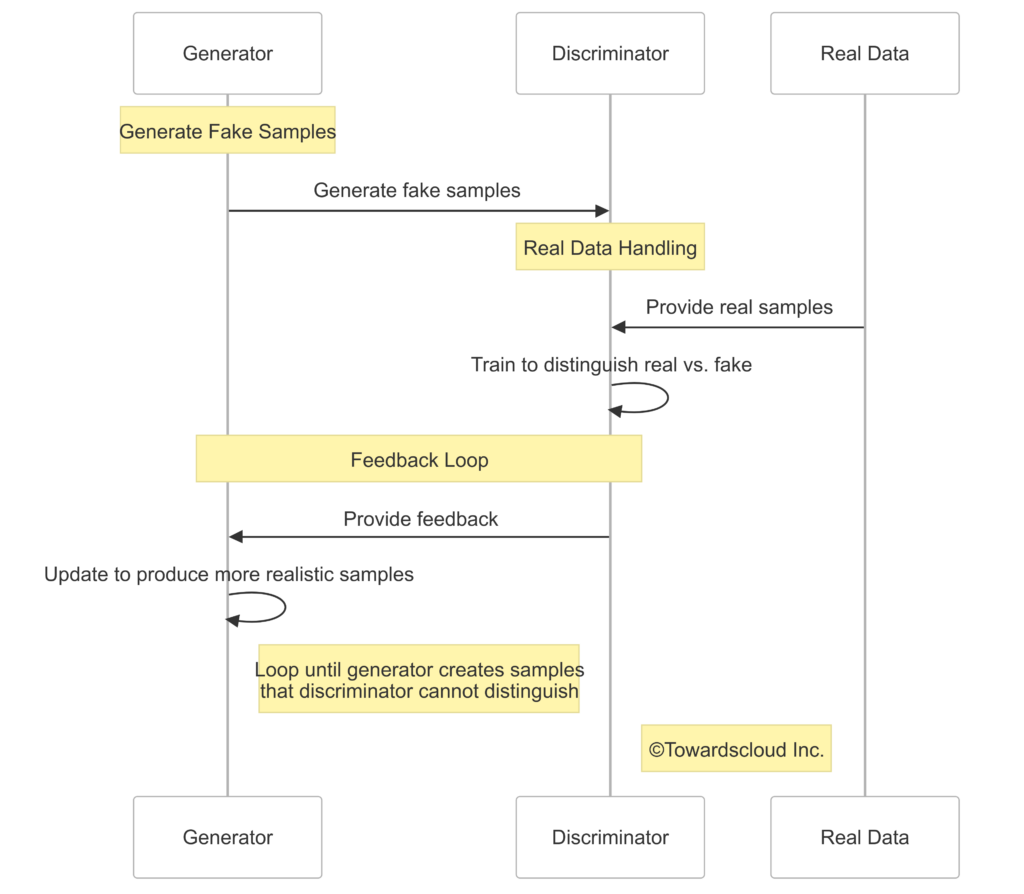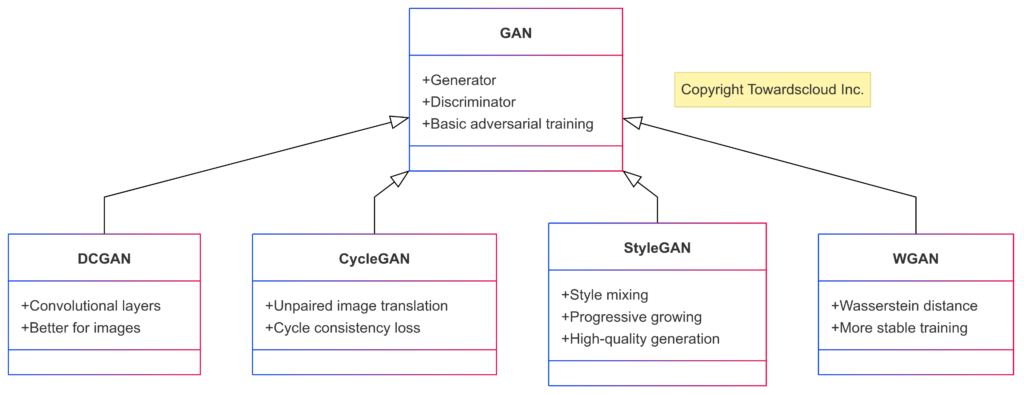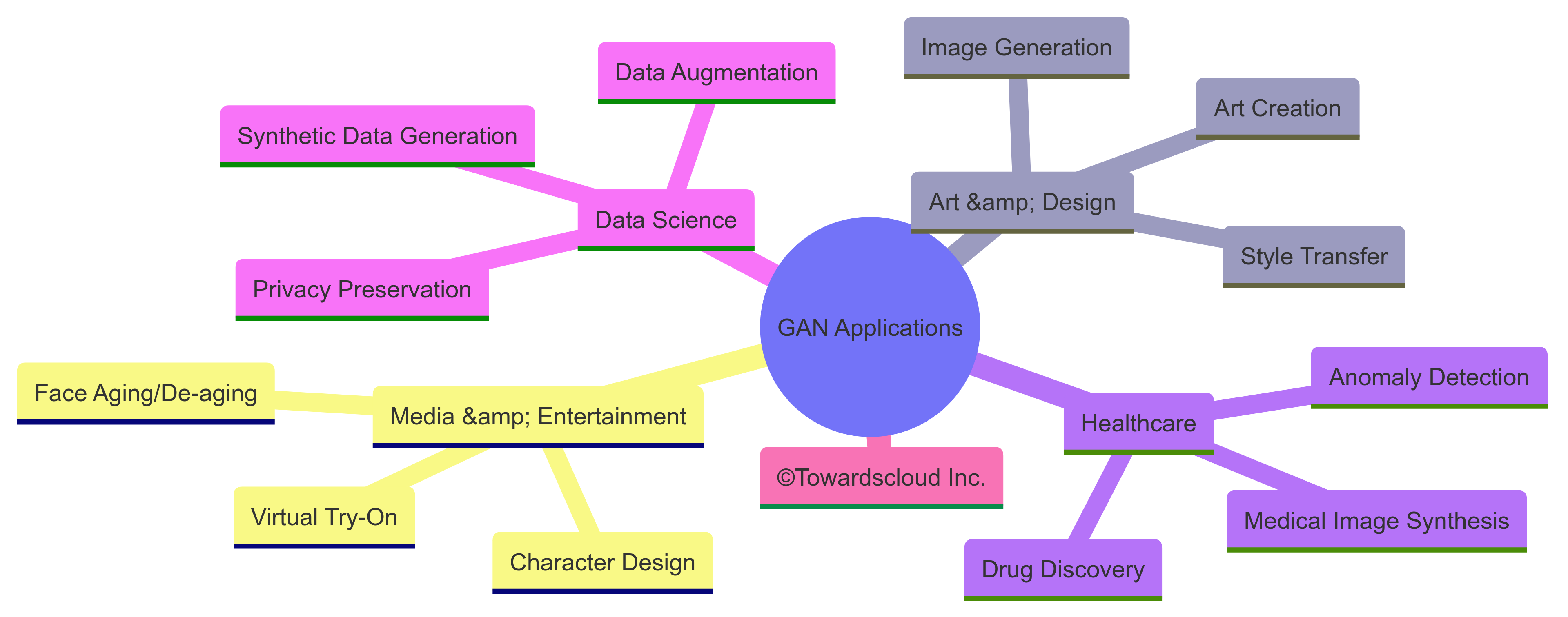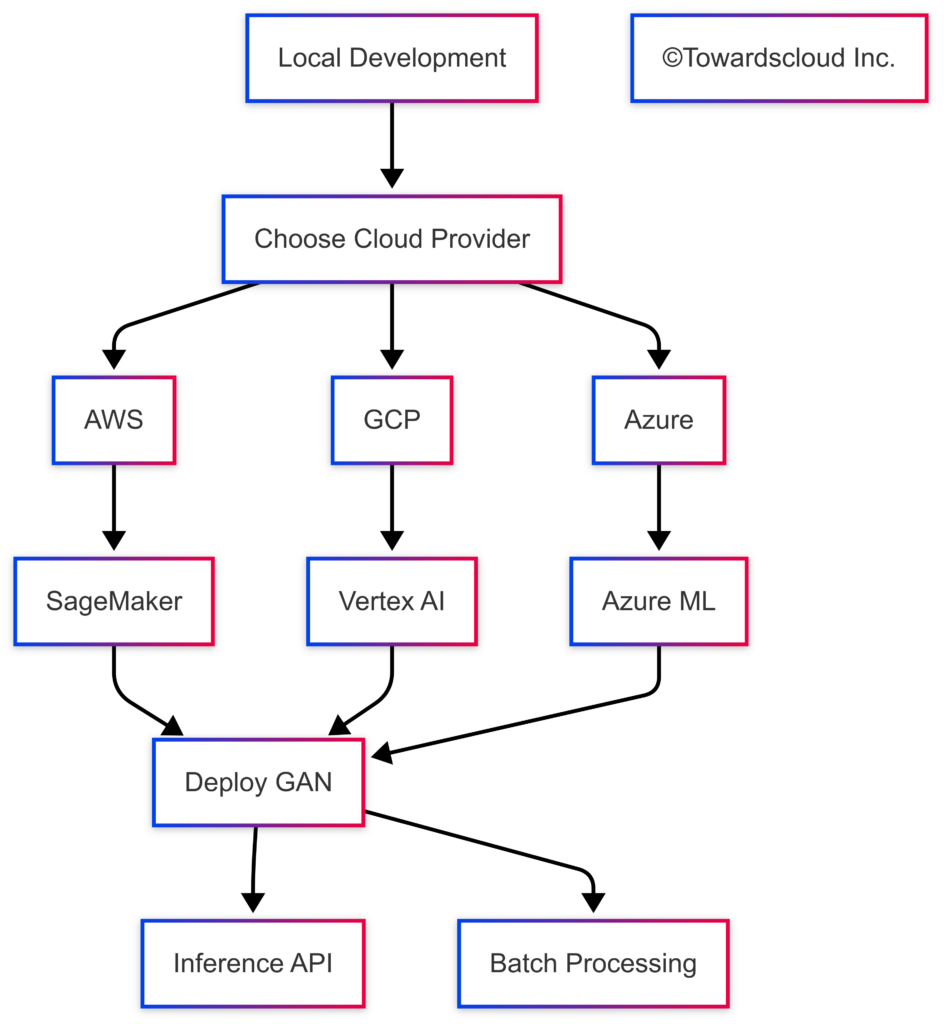What Are GANs?
Generative Adversarial Networks, or GANs, represent one of the most fascinating innovations in artificial intelligence in recent years. First introduced by Ian Goodfellow and his colleagues in 2014, GANs have revolutionized how machines can create content that mimics real-world data.
Call to Action: Have you ever wondered how AI can create realistic faces of people who don’t exist? Or how it can turn a simple sketch into a photorealistic image? Keep reading to discover the magic behind these capabilities!
At their core, GANs consist of two neural networks that are pitted against each other in a game-like scenario:
The Discriminator: Tries to distinguish between real and fake data
The Generator: Creates fake data (images, text, etc.)

The Intuition Behind GANs: A Real-World Analogy
Think of GANs as a counterfeit money operation, where:
- The Generator is like a forger trying to create fake currency
- The Discriminator is like a detective trying to spot the counterfeits
- Both improve over time: the forger gets better at creating convincing fakes, while the detective gets better at spotting them
Call to Action: Try to imagine this process in your own life. Have you ever tried to improve a skill by competing with someone better than you? That’s exactly how GANs learn!
How GANs Work: The Technical Breakdown
Let’s break down the GAN process step by step:

1. Initialization
- The Generator starts with random parameters
- The Discriminator is initially untrained
2. Training Loop
- Generator: Takes random noise as input and creates samples
- Discriminator: Receives both real data and generated data, trying to classify them correctly
- Feedback Loop: The Generator learns from the Discriminator’s mistakes, gradually improving its output
3. Mathematical Objective
GANs are trained using a minimax game formulation:
min_G max_D V(D, G) = E[log(D(x))] + E[log(1 - D(G(z)))]
Where:
G is the generator
D is the discriminator
x is real data
z is random noise
D(x) is the probability that the discriminator assigns to real data
D(G(z)) is the probability the discriminator assigns to generated data
Types of GANs
The GAN architecture has evolved significantly since its introduction, leading to various specialized implementations:

| GAN Type | Key Features | Best Use Cases |
|---|---|---|
| DCGAN (Deep Convolutional GAN) | Uses convolutional layers | Image generation with structure |
| CycleGAN | Translates between domains without paired examples | Style transfer, season change in photos |
| StyleGAN | Separates high-level attributes from stochastic variation | Photo-realistic faces, controllable generation |
| WGAN (Wasserstein GAN) | Uses Wasserstein distance as loss function | More stable training, avoiding mode collapse |
Call to Action: Which of these GAN types sounds most interesting to you? Each has its own strengths and applications. As you continue reading, think about which one might best suit your interests or projects!
Real-World Applications of GANs
GANs have found applications across numerous domains:

Art and Creativity
- NVIDIA GauGAN: Turns simple sketches into photorealistic landscapes
- ArtBreeder: Allows users to create and blend images in creative ways
Media and Entertainment
- De-aging actors in movies
- Creating virtual models and influencers
- Generating realistic game textures and characters
Healthcare
- Synthesizing medical images for training
- Creating realistic patient data while preserving privacy
- Medical GAN research for improving diagnostics
Data Science and Security
- Data augmentation for training other machine learning models
- Generating synthetic datasets when real data is scarce or sensitive
- Privacy-preserving techniques for sensitive information
Call to Action: Think about your own field or interest area. How might GANs transform what’s possible there? Share your thoughts in the comments section below!
Challenges and Limitations of GANs
Despite their impressive capabilities, GANs face several challenges:

1. Mode Collapse
When the generator produces a limited variety of samples, failing to capture the full diversity of the training data.
2. Training Instability
GANs are notoriously difficult to train, often suffering from oscillating loss values or failure to converge.
3. Evaluation Difficulty
It’s challenging to objectively measure how “good” a GAN is performing beyond visual inspection.
4. Ethical Concerns
Technologies like deepfakes raise serious concerns about misinformation and privacy.
Cloud Provider Support for GAN Development
All major cloud providers offer services that make developing and deploying GANs more accessible:
| Cloud Provider | Key Services | GAN-Specific Features |
|---|---|---|
| AWS | SageMaker, AWS Deep Learning AMIs | Pre-configured environments with popular GAN frameworks |
| GCP | Vertex AI, TPU support | Specialized hardware for training large GAN models |
| Azure | Azure Machine Learning, Azure GPU VMs | End-to-end ML lifecycle management for GAN projects |

Call to Action: Which cloud provider are you currently using? Have you tried implementing machine learning models on their platforms? Share your experiences in the comments!
Building Your First GAN: A Simplified Approach
For beginners interested in building their first GAN, here’s a simplified approach:

1. Start with a Simple Task
Begin with a straightforward problem like generating MNIST digits or simple shapes.
2. Use Established Frameworks
Libraries like TensorFlow and PyTorch offer GAN implementations that provide a solid starting point:
# Simplified PyTorch GAN example
import torch
import torch.nn as nn
# Define a simple generator
class Generator(nn.Module):
def __init__(self):
super().__init__()
self.model = nn.Sequential(
nn.Linear(100, 256),
nn.ReLU(),
nn.Linear(256, 512),
nn.ReLU(),
nn.Linear(512, 784),
nn.Tanh()
)
def forward(self, z):
return self.model(z)
# Define a simple discriminator
class Discriminator(nn.Module):
def __init__(self):
super().__init__()
self.model = nn.Sequential(
nn.Linear(784, 512),
nn.LeakyReLU(0.2),
nn.Linear(512, 256),
nn.LeakyReLU(0.2),
nn.Linear(256, 1),
nn.Sigmoid()
)
def forward(self, x):
return self.model(x)3. Start Local, Scale to Cloud
Begin development locally, then leverage cloud resources when you need more computing power.
Call to Action: Ready to build your first GAN? Start with the simplified code above and experiment with generating simple images. Share your results and challenges in the comments section!
The Future of GANs
GANs continue to evolve rapidly, with several exciting developments on the horizon:

1. Multimodal GANs
Systems that can work across different types of data, such as generating images from text descriptions or creating music from visual inputs.
2. 3D Generation
Enhanced capabilities for generating three-dimensional objects and environments for gaming, virtual reality, and design.
3. Self-Supervised Approaches
Reducing the dependency on large labeled datasets through self-supervised learning techniques.
4. Ethical Guidelines and Tools
Development of better frameworks for responsible use of generative technologies.
Call to Action: Which of these future directions excites you the most? What applications would you love to see developed with advanced GANs? Share your vision in the comments!
Conclusion
Generative Adversarial Networks represent one of the most powerful paradigms in modern artificial intelligence. By understanding the fundamentals of how GANs work, you’re taking the first step toward harnessing this technology for creative, analytical, and practical applications.
Whether you’re interested in art generation, data augmentation, or cutting-edge research, GANs offer a fascinating entry point into the world of generative AI.
In future articles, we’ll dive deeper into specific GAN architectures, explore implementation details for cloud deployment, and showcase innovative applications across various industries.
Call to Action: Did this introduction help you understand GANs better? What specific aspects would you like to learn more about in future posts? Let us know in the comments below, and don’t forget to subscribe to our newsletter for more cloud and AI content!